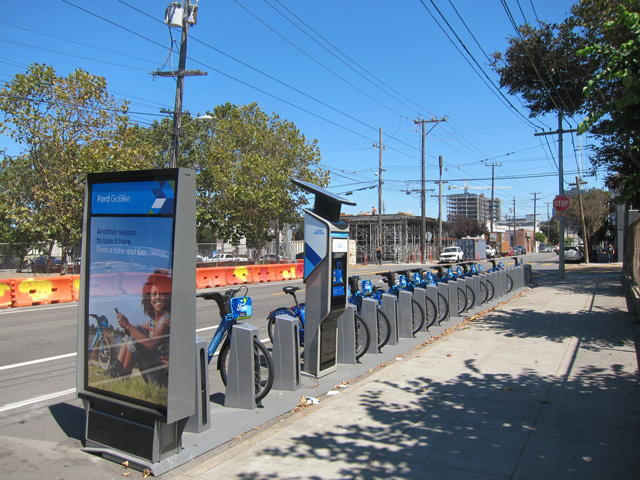By Benjamin Schneider : curbed – excerpt
Major infrastructure projects are necessary for the Bay Area to address climate change and keep its growing population moving
When the newly opened Salesforce Transit Center closed to repair cracked steel beams in September 2018, local-news junkies and transportation boosters felt a sense of deja vu. The steel beam situation was eerily similar to the saga of the defective “steel rods” on the eastern span of the Bay Bridge, which needed structural reinforcement just as the new bridge was about to open. Both projects shared another defect: ballooning budgets that bore no resemblance to initial estimates.
These recurring difficulties with the Bay Area’s megaprojects have become the stuff of negative headlines around the country, and are seized upon as ammunition by opponents of visionary infrastructure projects. But a frank reckoning with the state of megaproject delivery in the Bay Area is just as important for supporters of mass transit and green infrastructure as it is for the naysayers. With even more (and more complex) projects on the horizon—including the high-speed rail, which will connect LA with SF via the Central Valley, and a second Transbay Tube—the Bay Area needs to get megaproject delivery back on track.
Curbed SF spoke to experts in this field to better understand where the Bay Area’s megaprojects have gone wrong, and what they can do differently in the future. It all starts with extensive preplanning, according to Karen Trapenberg Frick, a professor of city and regional planning at the University of California, Berkeley, who wrote Remaking the Oakland-San Francisco Bay Bridge about the arduous replacement of the eastern span…
“As soon as we’re angling for the first dollar, when this thing’s real, we need to establish independent external peer review,” she says. With both the Salesforce Transit Center and the Bay Bridge, comprehensive, external oversight only came after major problems were detected. Planning and peer review can also help with budgeting and project management. Experts should be in the room with planners and policymakers, telling them, “These projects are hard, they take a long time, they’re going to cost more than we think,” says Trapenberg Frick….
“Don’t, unless absolutely necessary, try to invent anything new. Look at what is being done in other places where costs are low and performance is high, and just copy it.”
… (more)
Considering all the problems we have seen unfold with megaprojects, the public should not trust the government process based on “optimism bias” as the author so aptly puts it.
Much the problem, as in the case of the Millennium tower, comes from lack of communication, between departments, designers, and engineers. Perhaps an earlier peer review would help.
Hiring experts who have successfully completed projects is a no-brainer as, is using existing systems.


